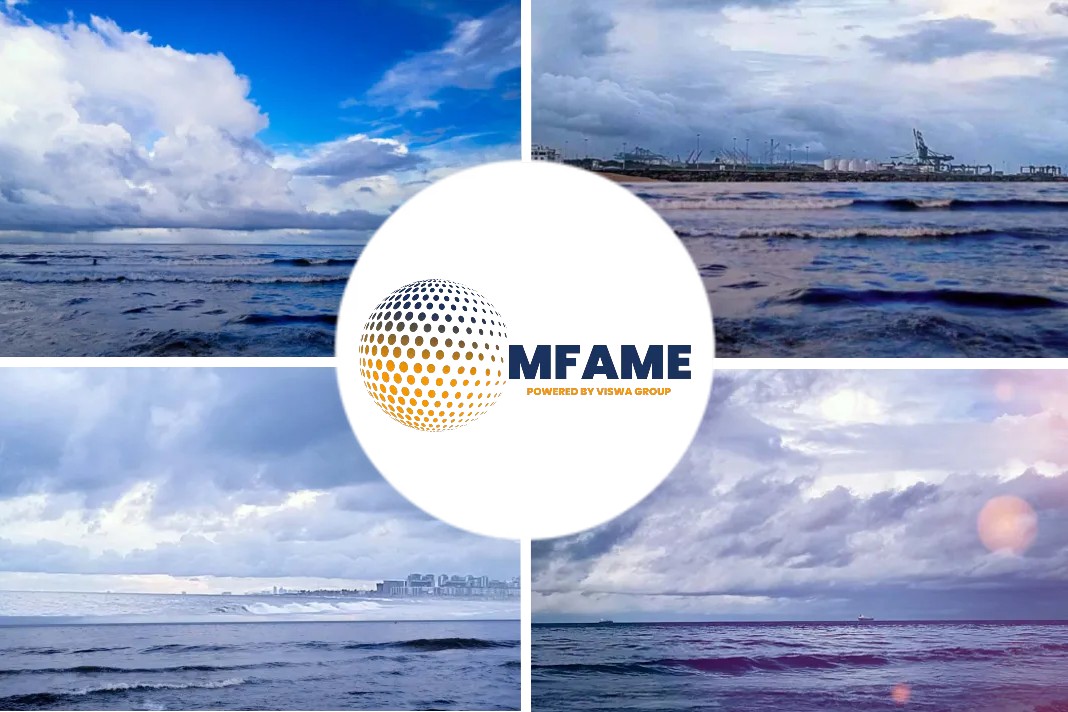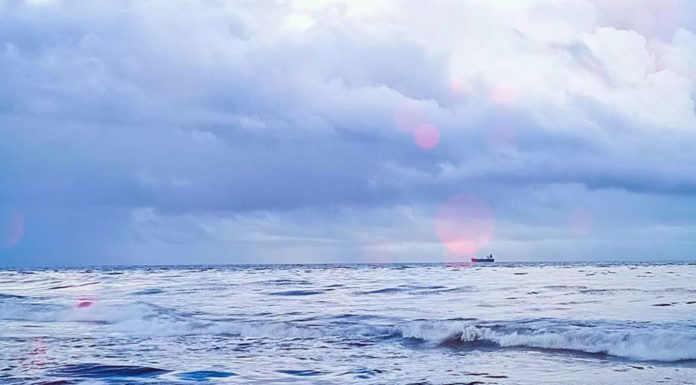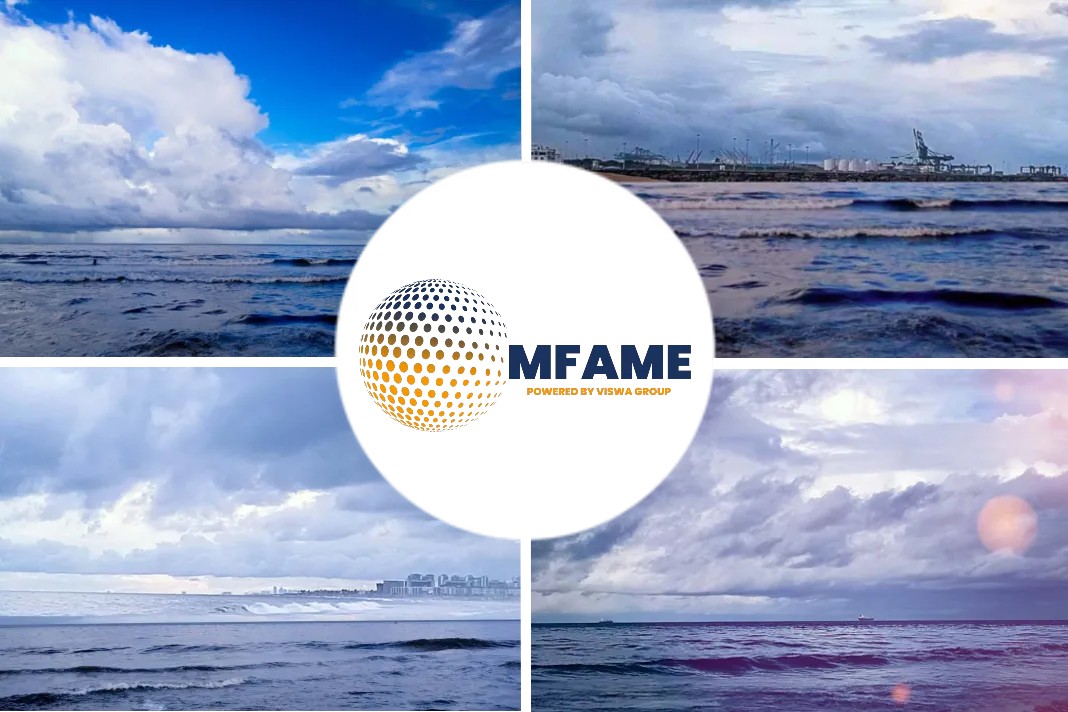In a major development, the shipping giant has released their 2020 Q2 profit report today highlighting profitability in all sectors, says a press release published on their website.
Key takeaway for the maritime industry
In his LinkedIn post, the leading container shipping expert Lars Jensen made the following observation from Maersk Q2 Profits.
Probably the 2 most important take-aways from Maersk’s Q2 results today:
- Their online Maersk Spot product now accounts for 41% of the total loaded short-term volume for Ocean. Seen from a longer-term strategic perspective for the entire industry, this level of uptake cannot be underestimated. The digital change in the industry has been massively accelerated and anyone not “on the train” at this point needs to play catch-up real quick.
- Secondly, after having suspended their full-year guidance, they have now re-instated it. And not only that. The new guidance of an EBITDA of 6-7 Billion USD is actually higher than the 5.5 Billion USD which was expected before the pandemic impacted the industry. This is even more bullish than Hapag-Lloyd who “only” maintain their profit expectations at the same level as they were before the pandemic
How Q2 profitability was achieved?
Q2 2020, A.P. Moller – Maersk improved profitability across all businesses through agile capacity deployment, cost mitigation initiatives and adaption to changing customer needs. The earnings improvement was achieved despite the sharp drop in global volumes following the COVID-19 crisis.
“As expected, the second quarter was materially impacted by COVID-19 and our focus remained on protecting our employees from the virus, serving our customers by keeping our global network of ships sailing and our ports, warehouses and inland transportation networks operating and helping the societies we are part of fight the virus,” says Søren Skou, CEO of A.P. Moller – Maersk and continues:
“I am pleased that we despite the headwinds, continued our track record of improving earnings and free cash flow. Our operating earnings improved by 25%, marking the eighth consecutive quarter with year-on-year improvements, driven by strong cost performance across all our businesses, lower fuel prices and higher freight rates in Ocean and increased profitability in Logistics & Services.
With a strong result and a strong balance sheet we are well-positioned to financially and strategically come out stronger of the crisis.”
The profit statistics on all sectors
- Earnings before interest, tax, depreciation, and amortization (EBITDA) improved to USD 1.7bn, which is higher than the initial expectations in the trading update from June of an EBITDA slightly above USD 1.5bn.
- The EBITDA margin increased from 14.1% in Q2 last year to 18.9%.
- Revenue decreased by 6.5% to USD 9bn, driven by a volume decrease of 16% in Ocean and 14% in gateway terminals.
- In Ocean, the lower volumes were partly offset by agile capacity deployment of the global network leading to lower costs, together with lower fuel prices and higher freight rates.
- In Logistics and Services, profitability increased through cost measures, favorable airfreight contribution and the integration of Performance Team, while Terminals & Towage showed their resilience by compensating lower volumes through cost measures.
Focus areas that helped
- The continued focus on improving returns showed further results with cash return on invested capital (CROIC), last twelve months improving to 12.5% from 8.9% and ROIC, last twelve months increasing to 4.7% from 1.4% in the previous year.
- The net interest-bearing debt was USD 11.6bn compared to USD 11.7bn by the end of 2019, as free cash flow of USD 1.5bn allowed for share buy-back, dividends and acquisitions in the first six months of 2020.
- The focus on a strong cost and capital allocation discipline will continue, and more additional cost and structural measures across the business will be taken to offset the negative impact of COVID-19 and fund the next stages of the transformation.
Guidance for 2020
A.P. Moller – Maersk suspended the full-year guidance for 2020 (EBITDA before restructuring and integration costs of around USD 5.5bn) on 20 March 2020 due to the COVID-19 pandemic, given material uncertainties and lack of visibility related to the global demand for container transport and logistics.
Despite the uncertainties related to COVID-19, A.P. Moller – Maersk reinstates its full-year guidance for 2020 and now expects EBITDA to be between USD 6.0bn-7.0bn, before restructuring and integration costs.
The global demand growth for containers is still expected to contract in 2020 due to COVID-19 and for Q3 2020 volumes are expected to progressively recover with a current expectation of a mid-single-digit contraction. Organic volume growth in Ocean is expected to be in line with or slightly lower than the average market growth.
The outlook and guidance for 2020 is subject to significant uncertainties related to the COVID-19 pandemic and do not take into consideration a material second lockdown phase. The guidance is also subject to uncertainties related to freight rates, bunker prices and other external factors.
The accumulated guidance on gross capital expenditures excl. acquisitions (CAPEX) for 2020-2021 is still expected to be USD 3.0-4.0bn, with steps being taken to reduce CAPEX in 2020. High cash conversion (cash flow from operations compared to EBITDA) is still expected for both years.
Highlights Q2
Revenue
| USD million | 2020 | 2019 |
|---|---|---|
|
Ocean
|
6570 |
7196 |
|
Logistics & Services
|
1,569
|
1,579
|
|
Terminals & Towage
|
878 |
971
|
|
Manufacturing & Others
|
316 |
300 |
|
Unallocated activities, eliminations, etc.
|
-336
|
-419
|
|
A.P Moller – Maersk consolidates – continuing operations
|
8997 |
9627 |
EBITDA
| USD million | 2020 | 2019 |
|---|---|---|
|
Ocean
|
1357 |
1077 |
|
Logistics & Services
|
97 |
46 |
|
Terminals & Towage
|
237 |
230
|
|
Manufacturing & Others
|
49 |
39 |
|
Unallocated activities, eliminations, etc.
|
-43
|
-35
|
|
A.P Moller – Maersk consolidates – continuing operations
|
1,697
|
1357 |
CAPEX
| USD million | 2020 | 2019 |
|---|---|---|
|
Ocean
|
208 |
314 |
|
Logistics & Services
|
35 |
28
|
|
Terminals & Towage
|
112
|
86 |
|
Manufacturing & Others
|
7 |
10
|
|
Unallocated activities, eliminations, etc.
|
– |
7 |
|
A.P Moller – Maersk consolidates – continuing operations
|
362 |
445 |
Sensitivity guidance
A.P.Moller – Maersk’s financial performance for the full-year 2020 depends on several factors and is subject to uncertainties related to COVID-19, bunker fuel prices and freight rates combined with the weaker macroeconomic conditions and other external factors.
Based on the expected earnings level and all else being equal, the sensitivities for the rest of 2020 for four key assumptions are listed in the table below:
| Factors | Change | Effect on EBITDA Rest of year |
|---|---|---|
|
Container freight rate
|
+/- 100 USD/FFE
|
+/- USD 0.6bn
|
|
Container freight volume
|
+/- 100,000 FFE
|
+/- USD 0.1bn
|
|
Bunker price (net of expected BAF coverage)
|
+/- 100 USD/tonne
|
-/+ USD 0.2bn
|
|
Foreign rate of exchange (net of hedges)
|
+/- 10% change in USD
|
+/- USD 0.1bn
|
About A.P. Moller – Maersk
A.P. Moller – Maersk is an integrated container logistics company working to connect and simplify its customers’ supply chains. As the global leader in shipping services, the company operates in 130 countries and employs roughly 80,000 people.
Did you subscribe to our daily newsletter?
It’s Free! Click here to Subscribe!
Source: Maersk















